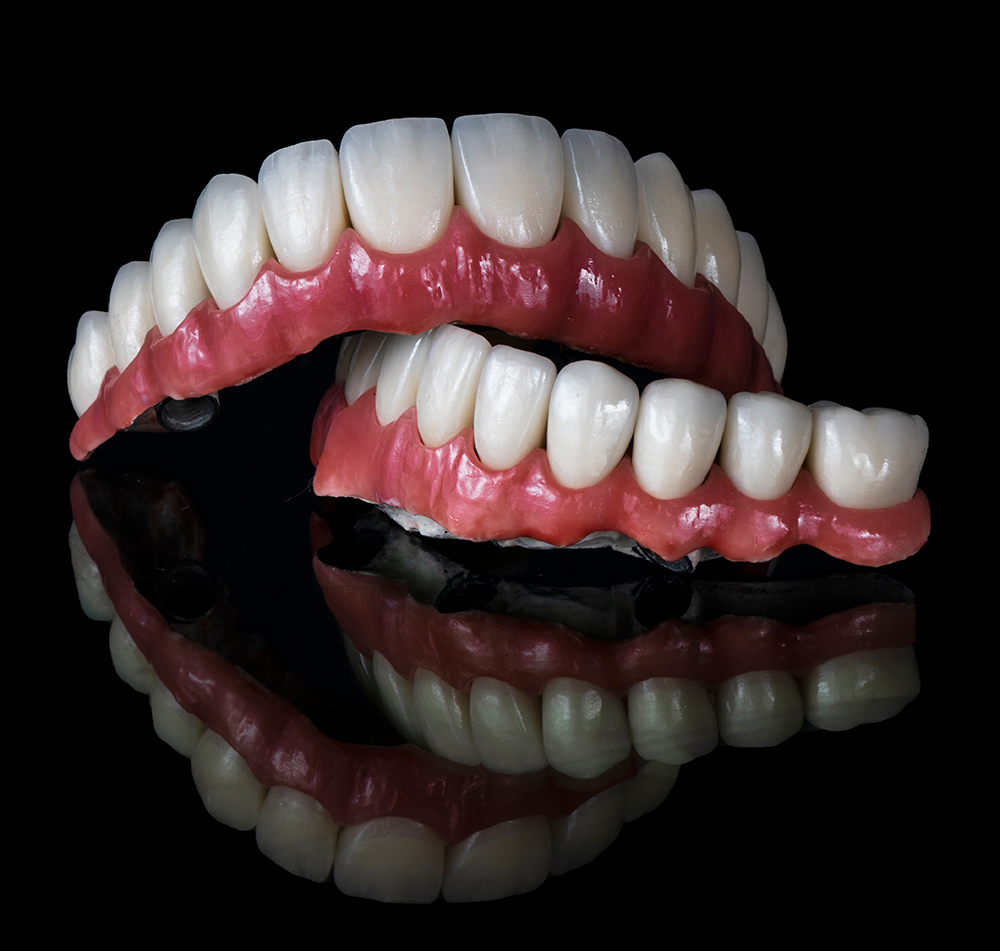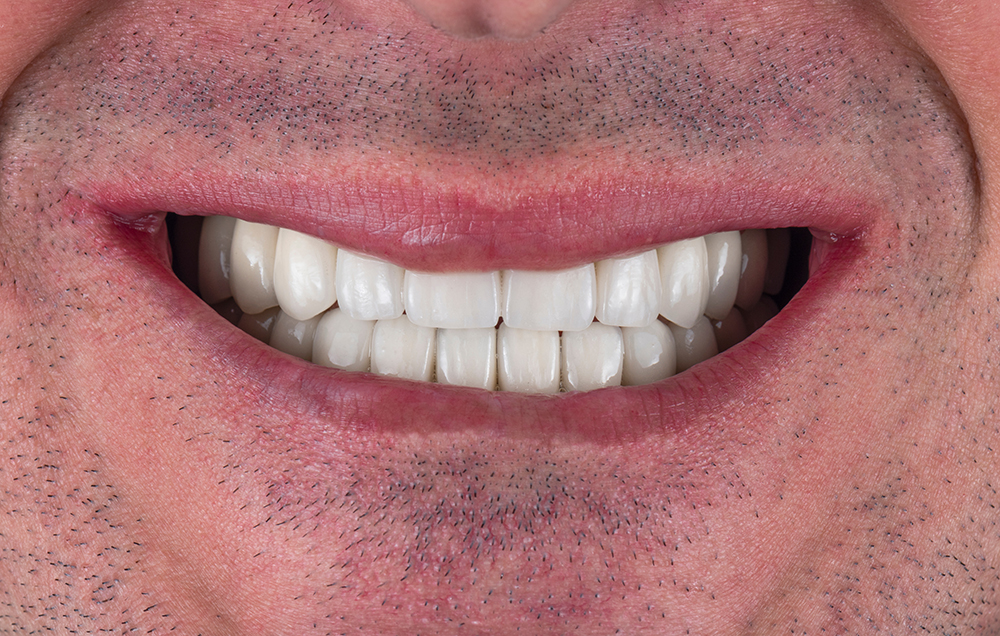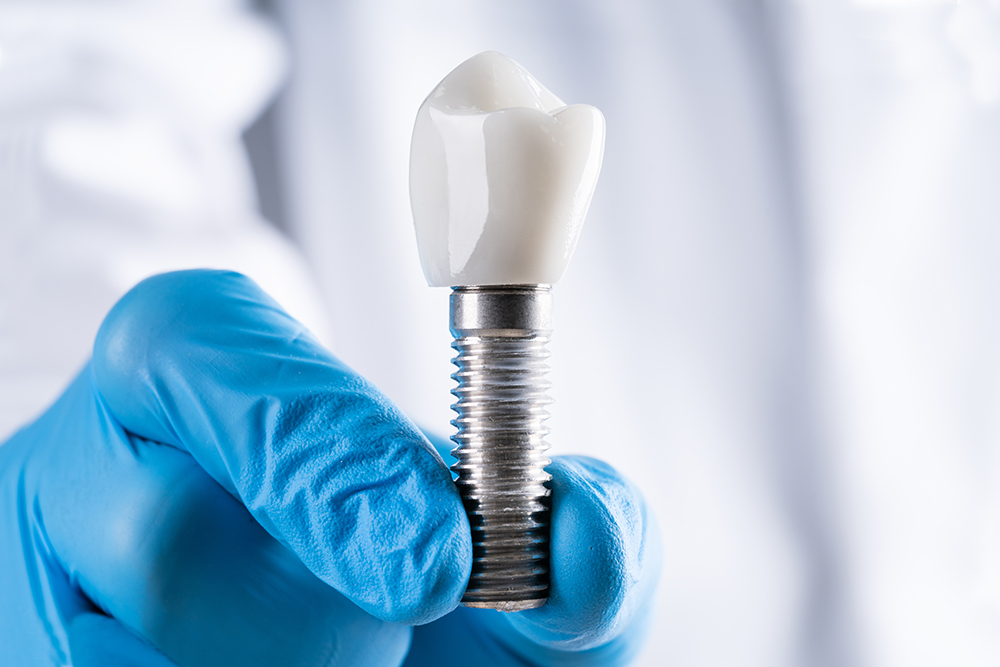What is the All on 4 and All on 6 Technique?
All on 4 and All on 6 implant application techniques; It is the process of fixing the dental prosthesis with minimum implant application for patients who have compatibility problems with removable prostheses due to bone loss, who want to have a fixed prosthesis, and who have lost all their teeth. In these procedures, 4 to 8 implants are applied, depending on the condition of the individual’s jaw bones. You can find more detailed information about implant applications in our Dental Implant article. All on 4 and All on 6 applications increase the comfort of use by ensuring the fixation of the prosthesis. In addition, temporary prostheses provide an aesthetic advantage as they can be applied to the patient on the day of the procedure.
Who are All on 4 and All on 6 Techniques Suitable for?
All On Four and All on 6 treatment techniques; It is a suitable procedure for patients who have lost all their teeth and do not have any health problems that would prevent implant applications. In addition, All On Four and All on 6 techniques; It is also a suitable option for implant treatment in the same session as the extraction of these teeth in patients whose all teeth are damaged beyond treatment or have lost the surrounding bone support. These patients may not prefer to have multiple implant applications, or additional treatments may be required to place implants in the lost areas due to significant bone loss, especially in the back areas of the jaw line. In these cases, All on 4 and All on 6 techniques are suitable treatment alternatives for making a fixed prosthesis without the need for any additional procedures.
What are the advantages of All on 4 and All on 6 Techniques?

The fact that All on 4 and All on 6 applications allow dentures to be made on the same day as implant treatment for patients who have lost all their teeth provides a great advantage in restoring aesthetic and functional features. The aesthetics of the prosthesis can be easily planned individually. Ensuring smile aesthetics by arranging the smile line can also be included in this planning. In the application of All on 4 and All on 6 treatment techniques, there is generally no need for additional procedures to increase the amount of bone on the jawbone or in the sinus floor. It is a comfortable treatment option. There is usually no pain or edema after the procedure. Rarely, minimal pain and edema may occur. However; Loss of comfort in this process can be easily prevented by regular use of the medications prescribed by the dentist. Cleaning and maintenance of dentures made with All on 4 and All on 6 techniques is easier than standard dental implant applications. Since the prosthesis prepared in practice is fixed and does not have a part sitting on the palate, it is much easier to use than removable dental prostheses.
What to Expect During All on 4 and All on 6 Treatment Processes?
In order to plan All on 4 and All on 6 treatments, the first session clinical and radiographic examinations must be performed in detail. It should be checked whether the amount of gum tissue and bone is sufficient for implant placement. In cases where it is not sufficient, additional procedures can be applied before treatment to gain the needed tissue in the relevant area. Depending on the condition of the tissues, bone addition is done by adding bone powder or by taking the patient’s own bone from a different area and placing it in the needed area. If these procedures are performed by surgeons who are experts in their fields, it is necessary to wait 4-6 months for the bone to reach ideal quality. After this process is completed, implant application can be performed by providing the necessary controls.
If all conditions are suitable for application, measurements are taken to prepare the temporary prosthesis. Computed tomographies, which allow detailed examination of the jaw bones, are used to determine the most ideal treatment while preserving the health of the surrounding tissues. Detailed measurements are made on the patient’s tomography image, and the areas where the implants will be applied are determined. In line with the created plan, if there are teeth that need to be extracted on the day of treatment, they are extracted and 4 or 6 implants are applied. These transactions; It can be easily performed under local anesthesia, but in patients with high levels of anxiety and fear, it can also be performed with sedation or general anesthesia. Temporary dental prostheses are fixed on the implants on the same day as implant applications. The process of fusing the implant and the bone is accomplished comfortably with temporary prostheses. At the end of this process, which takes an average of 3 months, the implants are ready for the construction of permanent prostheses.
What kind of process awaits you after All on 4 and All on 6 procedures?
 Pain or edema rarely occurs after All on 4 and All on 6 procedures. This situation can be easily overcome without loss of comfort. Regular use of the medications prescribed by the dentist and applying cold compresses to the area are sufficient to control pain and edema in a short time. After the application, patients should be careful to put as little load on the temporary dental prosthesis as possible. For this reason, hard or sticky foods should be avoided and soft foods should be preferred while the temporary dentures are in the mouth. When the bond between the bone and the implant is ideally achieved, permanent dental prostheses are made. When permanent dental prostheses are fixed on the implant, normal nutrition can be resumed. Paying attention to oral care is also an important factor for the life of the implants.
Pain or edema rarely occurs after All on 4 and All on 6 procedures. This situation can be easily overcome without loss of comfort. Regular use of the medications prescribed by the dentist and applying cold compresses to the area are sufficient to control pain and edema in a short time. After the application, patients should be careful to put as little load on the temporary dental prosthesis as possible. For this reason, hard or sticky foods should be avoided and soft foods should be preferred while the temporary dentures are in the mouth. When the bond between the bone and the implant is ideally achieved, permanent dental prostheses are made. When permanent dental prostheses are fixed on the implant, normal nutrition can be resumed. Paying attention to oral care is also an important factor for the life of the implants.
What are the factors that determine the lifespan of All on 4 and All on 6 Applications?
All on 4 and All on 6 applications, whose long-term success has been proven by research, are the most comfortable method for patients who are suitable for this treatment technique. However, in this process, it is of great importance to ensure a good connection between the bone and the implant. In order to establish this connection in the most ideal way, the patient’s medications and recommended diet prescribed by the physician; It should be applied as recommended in the required period. And also; During the period when both temporary and permanent dental prostheses are used, attention should be paid to daily oral care and regular physician check-ups should be performed. In this way, the possibility of infection around the implant and loss of implants is prevented.
Get a Free Quote:
If you want to get detailed information about our dental treatments, you can contact us by filling out our consultation form or you can get information directly from our WhatsApp line: +905443480787

